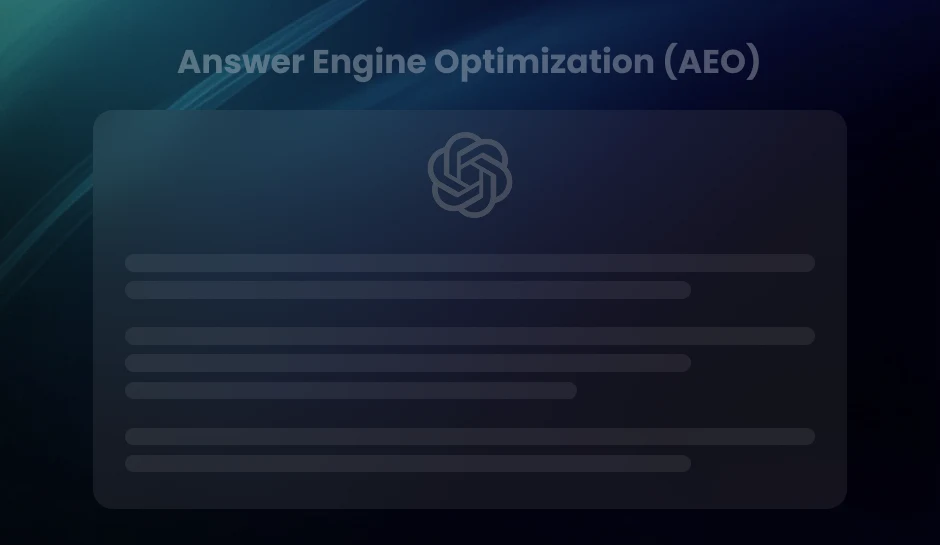
Attribution in Adobe Analytics: Unlock Campaign Insights
Attribution is essential for refining marketing strategies by assigning value to customer touchpoints and understanding their influence on conversions. With tools like Adobe Analytics, marketers can leverage advanced attribution models, including multi-touch and data-driven approaches, to optimize budget allocation and improve ROI. This data-driven precision empowers businesses to craft targeted, effective campaigns that drive measurable success.
Attribution in Adobe Analytics refers to the process of assigning credit to various marketing touchpoints that lead to a conversion. It helps marketers understand which channels and interactions drive the most value, enabling data-driven decisions for budget allocation and campaign optimization. This blog explores key attribution models, best practices, and how Adobe Analytics enhances marketing performance through precise attribution insights.
Adobe Analytics: A Vanguard for Advanced Attribution Analysis
Adobe Analytics offers an array of tools that dissect and interpret complex consumer interactions. By enabling detailed attribution analysis, it assists businesses in understanding the nuances of their customer’s decision-making processes. Through data integration and multi-dimensional analysis, Adobe Analytics provides marketers with the clarity required to refine their attribution strategies for measurable outcomes.
Understanding Marketing Attribution Models
Marketing attribution models provide insights into the impact of different marketing tactics on consumer behavior and business outcomes. Integration of these models into analytical strategies can pinpoint the value of diverse marketing efforts and guide investment decisions.
Brief overview of various attribution models
Attribution models can be categorized broadly as single-touch or multi-touch. Single-touch models, such as the first-touch and last-touch, acknowledge a single point in the customer journey – either the first interaction or the last before the conversion occurs. Meanwhile, multi-touch attribution models, which include linear, time decay, and position-based models, distribute credit to multiple touchpoints throughout the customer journey, reflecting a more holistic view of the conversion process.
Models available within Adobe Analytics
- First-Touch Attribution:
- Last-Touch Attribution:
- Linear Attribution:
- Time Decay Attribution:
- Position-Based Attribution:
- Algorithmic/Custom Attribution:
Assigns 100% credit to the initial touchpoint that introduced a customer to the brand.
Credits the final touchpoint before a conversion, frequently reflecting the immediate impetus that prompted a purchase.
Assigns equal credit to all the touchpoints in the conversion path.
This gives more credit to touchpoints that occur closer in time to the conversion event.
Allocates more credit to significant touchpoints, such as the first and last interactions.
Utilizes data-driven models that allocate credit based on custom rules or machine learning algorithms.
Exploring Multi-Touch Attribution (MTA) in Adobe Analytics
Multi-Touch Attribution (MTA) models distribute credit for a conversion across all marketing touchpoints experienced by a customer. Unlike single-touch models, MTA acknowledges that multiple interactions often influence the customer journey, allowing marketers to assess the impact of each touchpoint accurately. Thus, MTA provides insights into the performance of each marketing channel and campaign, optimizing the allocation of marketing budgets and strategy refinement.
Defining Multi-Touch Attribution and its Benefits
In a complex digital landscape, customers engage with a brand through diverse channels before conversion. MTA in Adobe Analytics offers a comprehensive view of the customer journey. By leveraging this granular insight, marketers can understand which touchpoints drive conversions, thereby refining targeting strategies, improving customer experience, and enhancing overall marketing effectiveness.
How to configure MTA in Adobe Analytics
Setting up MTA in Adobe Analytics involves creating rules in the Attribution IQ setup to define how credit for conversions should be allocated. Users can choose among various attribution models or customize their own. The platform’s flexibility allows for a tailored approach to match specific business needs and objectives.
Understanding the data and metrics provided by MTA reports
Adobe Analytics’ MTA reports illuminate the value that different marketing activities contribute to conversions. Metrics such as Assisted Conversions, Path Length, and Time to Conversion emerge from MTA data. Analyzing these metrics enables marketers to identify which campaigns perform best, how long it takes for marketing efforts to yield results and the contribution of each channel to the customer journey.
Pro Tip- Use Adobe Analytics’ Attribution IQ to experiment with different multi-touch attribution models and identify the one that best aligns with your business goals. Regularly analyze metrics like Assisted Conversions and Path Length to fine-tune your strategies and maximize the effectiveness of each marketing channel.
Deciphering First-Touch vs. Last-Touch Attribution in Adobe Analytics
Adobe Analytics offers diverse attribution models to align with varying marketing objectives. Among these, First-Touch and Last-Touch attribution stand out. First-Touch attribution assigns the entire credit for a conversion to the initial consumer interaction with a marketing channel. Conversely, Last-Touch attribution credits the final touchpoint before the conversion.
Opting Between First-Touch and Last-Touch Attribution
In determining when to apply First-Touch or Last-Touch attribution, context is key. The former shines in visibility for campaigns aimed at generating awareness, while the latter illuminates the effectiveness of closing channels. Aligning the choice of model with campaign goals within Adobe Analytics is a decisive step toward insightful analysis.
Assessing Marketing ROI Impact
The First-Touch model reveals the pioneering touchpoints that attract prospects, elucidating the start of the customer journey. Last-Touch attribution, however, highlights converting touchpoints, thereby demystifying the end of that journey. Each model presents a slice of the ROI puzzle by shining light on different stages of the sales funnel.
- First-Touch attribution surfaces prospecting channels that lead to engagement.
- Last-Touch attribution emphasizes the channels that drive commitment and sale completion.
Thoughtfully implementing these models within Adobe Analytics empowers marketers to measure impact based on specific strategic initiatives. Marketers gain the ability to tailor the assessment of marketing initiatives, fine-tuning investment to the most critical engagement points.
Pro Tip- Choose First-Touch attribution to evaluate the effectiveness of awareness campaigns and Last-Touch attribution to measure closing efficiency. Use both in tandem to gain a holistic understanding of the customer journey and optimize marketing strategies across the sales funnel.
Unlock the Potential of Cross-Channel Attribution
Cross-Channel Attribution involves understanding how different marketing channels affect the consumer’s path to conversion. Recognizing that today’s consumer interacts with a brand across numerous touchpoints, marketers leverage cross-channel attribution to obtain a comprehensive view of their efforts.
Tracking Cross-Channel Interactions
Adobe Analytics offers tools for tracking customer interactions across various channels. Users can set up specific tracking codes for each channel, using Processing Rules to ensure consistent data capture. By employing these codes, Adobe Analytics tracks the user journey, enabling an accurate depiction of cross-channel engagement.
Analyzing Channel Contribution
An in-depth analysis within Adobe Analytics reveals how each channel contributes to conversion, providing valuable insights into attribution. Implement robust insights into which channels are performing and why, allowing for data-driven decision-making.
- Examine conversion rates and understand channel performance over time.
- Analyze pathing reports to see sequential interactions and channel synergy.
- Use attribution comparison tools to juxtapose different models and their impact on channel valuation.
By capitalizing on cross-channel attribution in Adobe Analytics, marketers can identify successful strategies, allocate budgets more effectively, and enhance the overall customer experience.
Pro Tip- Use Adobe Analytics’ cross-channel attribution tools to uncover hidden synergies between channels. Leverage pathing reports to visualize customer journeys and attribution comparison tools to fine-tune your strategy for maximum ROI. Ensure tracking codes are consistently applied for accurate and actionable insights.
Navigating Attribution in Adobe Analytics Workspace
Adobe Analytics Workspace provides a robust interface for dissecting marketing attribution data. With its customizable panels, marketers can craft reports that highlight the effectiveness of different touchpoints in their campaigns.
Introduction to the Adobe Analytics Workspace Environment
Workspace in Adobe Analytics presents an intuitive layout enabling users to drag and drop different components to create bespoke analysis projects. The environment supports a diverse array of visualizations, including flow diagrams, bar charts, and scatter plots to better illustrate attribution across various marketing channels.
How to Create Attribution-Specific Reports
To assemble an attribution report in Workspace, select the ‘Attribution’ panel and choose the desired model. Provide the necessary dimensions and metrics. Users can further segment the data to drill down into specific campaign performances. The result will offer insights into which touchpoints are contributing most effectively to conversions.
Using Workspace to Visualize and Understand Attribution Data
Visual representations render complex data more digestible. Generate a visual roadmap of customer interactions by leveraging Workspace’s flow diagrams that can delineate users’ conversion paths. Scatter plots, meanwhile, can correlate different attribution points with conversions, offering a visual grasp of which interactions have the highest impact.
- To delve deeper, users apply filters to separate high-performing channels from those with lesser impact.
- An analysis of variance between attribution models may reveal untapped opportunities or underperforming investments.
- Workspace facilitates side-by-side model comparisons, illustrating the shift in value attribution among different touchpoints.
Overall, navigating within Adobe Analytics Workspace empowers marketers to refine their strategy, backed by a comprehensive understanding of their attribution data.
Pro Tip- Maximize Adobe Analytics Workspace’s potential by pairing visualizations like flow diagrams with attribution model comparisons. This combination uncovers detailed insights into customer journeys and the effectiveness of touchpoints, helping to fine-tune your marketing strategies with precision.
Maximize Insights with Attribution IQ in Adobe Analytics
Adobe Analytics sets the stage for deep-dive analyses with Attribution IQ, a component that transforms the way marketing impact is measured. Users leveraging Attribution IQ gain access to a range of models, offering a granular look into the effectiveness of their campaigns and touchpoints.
Introduction to Attribution IQ and its capabilities
Attribution IQ in Adobe Analytics extends beyond traditional attribution methods, accommodating today’s complex consumer journeys. This feature not only tracks multiple touchpoints but also applies different attribution models retrospectively to understand the contribution of each channel.
With its customizable settings, users can reveal hidden trends and optimize the consumer’s path to purchase. By dispelling the ambiguity often associated with conversion credits, Attribution IQ provides a transparent view of performance metrics.
Detailed approach to using Attribution IQ for comprehensive analysis
When deploying Attribution IQ, analysts start by selecting a model that aligns with their specific business goals. After implementing the chosen model, the system scrutinizes user interactions across channels, assigning credit to each touchpoint in the conversion path.
In doing so, Attribution IQ identifies patterns and informs strategic decisions. Analysts may, for instance, recognize that certain channels consistently play pivotal roles early in the conversion journey. Equipped with this knowledge, marketing strategies can be adjusted to capitalize on these influential touchpoints.
Tailoring analyses to answer focused questions about campaign performance becomes simpler. For example, determining which channels contribute most to customer retention or which touchpoints are likely to initiate the customer journey are tasks made straightforward through the flexibility of Attribution IQ.
- Comparing the impact of paid versus organic channels.
- Assessing the value of non-converting paths.
- Tracking cross-device behaviors and their influence on conversions.
Data collected via Attribution IQ offers powerful insights, highlighting not only the direct effects of advertising spends but also the nuanced influences that shape the customer experience.
Pro Tip- Use Attribution IQ’s retrospective model comparison to uncover hidden performance trends across campaigns. This enables you to identify underutilized channels or touchpoints, fine-tune your marketing mix, and maximize the ROI from both paid and organic efforts.
Customize Your Analysis with Custom Attribution Models in Adobe Analytics
Diverse marketing channels interact in complex ways, necessitating adaptable attribution models tailored to unique business needs. Adobe Analytics offers customization options for specialized attribution to decode these interactions.
The Need for Custom Attribution Models
Firms face a labyrinth of touchpoints in the buyer’s journey. A rigid, one-size-fits-all model fails to capture the subtleties within different industries or strategies. Hence, crafting custom attribution models aligns the analysis with the specific conversion dynamics of a business.
Creating and Applying Custom Models in Adobe Analytics
Adobe Analytics enables the synthesis of bespoke attribution models via its Calculated Metrics feature. By defining and combining different metric weights, users can sculpt models that mirror their strategic vision and objectives. Application of these models to marketing data transforms raw numbers into actionable insights.
- Selecting the appropriate attribution granularity.
- Aligning model parameters with customer touchpoints.
- Adjusting weights to uncover the true value drivers.
Analyzing Outcomes to Refine Marketing Efforts
After the deployment of custom models, the next step involves rigorous outcome analysis. Dissecting campaign performance under the lens of these models may reveal underperforming channels or potential areas for reallocation of budget. In response, marketing strategies can be recalibrated effectively to enhance performance and resource utilization.
Pro Tip- When designing custom attribution models in Adobe Analytics, focus on aligning metric weights with your specific business goals—such as customer acquisition, retention, or upselling. Test your model against historical data to validate its effectiveness before applying it broadly to ensure actionable insights and optimized resource allocation.
The Emergence of Data-Driven Attribution
The arrival of data-driven attribution marks a transformative era in understanding customer journeys. This approach leverages vast quantities of user interaction data to assign credit to different marketing touchpoints preceding a conversion. Unlike rule-based models, data-driven attribution analyzes actual user behavior, thereby allocating conversion credits in a more nuanced and representative manner. Enterprises harness this insightful technique to refine their marketing strategies, optimize budget allocation, and enhance conversion rates.
The Concept of Data-Driven Attribution and its Advantages
Data-driven attribution doesn’t follow a rigid set of rules. Instead, it uses powerful algorithms to evaluate all touchpoints across the customer journey. Each interaction’s influence on the eventual outcome is weighted objectively, resulting in a more precise distribution of conversion value across channels and tactics. Companies employing data-driven attribution are rewarded with actionable insights that can lead to more effective ad spending, improved customer engagement, and increased revenue streams.
How Adobe Analytics Supports Data-Driven Decisions Through Attribution
Adobe Analytics acts as a robust engine for data-driven decision-making. Utilization of this platform enables marketers to dissect and scrutinize the complex web of user touchpoints. With sophisticated attribution models, including data-driven options, Adobe Analytics processes and visualizes multifaceted customer paths. The platform aids in revealing hidden patterns and surfacing these insights for strategic business action, fueling a refined understanding of campaign performance and customer preferences.
- Attribution within Adobe Analytics helps in discerning the direct impact of specific marketing efforts on conversion rates.
- By analyzing customer behavior, Adobe Analytics affords a transparent view into what drives users to convert, offering a substantial groundwork for making informed marketing decisions.
- Marketers leverage the machine learning algorithms embedded in Adobe Analytics to capitalize on data-driven attribution, ensuring that Resource allocation is continuously optimized in light of emerging trends and customer feedback loops.
Pro Tip- Regularly revisit and refine your data-driven attribution models in Adobe Analytics to account for shifts in consumer behavior and emerging trends. Combining these insights with predictive analytics can help anticipate future patterns, further optimizing your marketing strategies and ensuring sustainable growth.
Leveraging Attribution and Machine Learning
Attribution serves as a lighthouse in the vast sea of marketing analytics, directing businesses toward understanding the effectiveness of their marketing efforts. When interlaced with machine learning, the precision and utility of attribution soar. Adobe Analytics becomes not just a tool but a seasoned guide, offering insights that help businesses chart a more deliberate and profitable course.
The Intersection of Attribution and Machine Learning
Traditionally, attribution models would allocate conversion credit based on pre-defined rules. Machine learning escalates this process by dynamically analyzing data to uncover patterns that influence customer behavior. This adaptive approach optimizes marketing spend by continuously refining its assessment of each channel’s contribution to conversions.
How Adobe Analytics Uses Machine Learning to Enhance Attribution Models
Adobe Analytics employs machine learning through its Attribution IQ feature, which provides ten different models for granular analysis of marketing performance. Data-driven attribution, a centerpiece of Attribution IQ, sifts through vast datasets, learning and evolving to allocate credit more accurately to touchpoints that contribute to conversions. This approach factors in the non-linear and complex nature of customer journeys.
Anticipating Marketing Trends with Predictive Analytics
Forward-looking businesses leverage predictive analytics to not only interpret past actions but also to forecast future consumer behavior. Adobe Analytics harnesses machine learning to analyze historical data, enabling marketers to anticipate trends, optimize campaigns in advance, and respond efficiently to emerging opportunities.
Pro Tip- Combine machine learning-powered attribution in Adobe Analytics with predictive analytics to proactively shape your marketing strategies. By continuously monitoring evolving customer patterns, you can uncover hidden opportunities, fine-tune campaigns, and stay ahead of shifting market dynamics.
Measuring the Impact of Attribution on ROI
Adobe Analytics provides comprehensive methodologies to evaluate the return on investment (ROI) tied to distinct attribution models. By analyzing conversion metrics alongside attributed touchpoints, businesses are equipped to track the profitability and effectiveness of their marketing efforts. This process facilitates fact-based decision-making, allowing for the optimization of marketing spend.
One reporting feature in Adobe Analytics significant for illustrating ROI is the Attribution IQ tool. This functionality delivers actionable insights into how different attributes contribute to conversions. Harnessing the power of Attribution IQ, marketers gain visibility into the performance of each touch-point within the customer’s journey, empowering them to allocate budget to the most effective channels.
To further enhance profitability, adjusting the marketing spend based on attribution-informed insights is a strategic exercise. By relegating less budget to underperforming channels and reinvesting in those with a proven track record, companies hone their marketing approach. This optimization can lead to a marked uplift in ROI, ensuring resources are allocated to avenues with the highest yield.
- Track and evaluate ROI by intersecting financial data with attribution models to pinpoint effective marketing tactics.
- Use Adobe Analytics’ reporting features such as Attribution IQ to visualize the impact of individual touchpoints on revenue generation.
- Optimize spend by shifting resources towards channels and campaigns that attribute data highlights as most profitable.
Pro Tip- Regularly compare ROI across different attribution models using Adobe Analytics’ Attribution IQ. This practice ensures you’re identifying and investing in the channels that consistently demonstrate the highest revenue contribution, enabling agile, data-driven marketing adjustments for maximum profitability.
Master Your Marketing Metrics with Adobe Analytics Attribution
Attribution remains a cornerstone in deciphering marketing complexities, and translating touchpoints into clear insights. Adobe Analytics emerges as a comprehensive suite, rich in features for crafting precise attribution models. By leveraging its full capacity, marketers gain the acumen to allocate investments effectively and pivot strategies with confidence.
Gone are the days of guessing games in marketing efforts. Now, professionals can craft campaigns backed by empirical evidence derived from Adobe Analytics’ multi-faceted attribution tools. Each user interaction becomes a valuable piece of data, guiding a strategic response that aligns with consumer behavior.
Deep dives into attribution features reveal patterns, forecast trends, and ignite informed decision-making. Incrementally, such insight-driven strategies foster sustainable growth and enhance return on investment.
Key Takeaways
- Maximize marketing impact with attribution in Adobe Analytics. Leverage its flexible models to accurately measure each touchpoint’s role in conversions and optimize budget allocation.
- Customize attribution strategies with AI-powered insights. Use machine learning to refine your approach based on evolving customer behaviors and data trends.
- Gain a holistic view of campaign performance. Track cross-channel interactions to identify high-performing touchpoints and improve strategic decisions.
- Optimize marketing spend with data-driven attribution. Analyze performance metrics to allocate resources effectively and maximize ROI.
Explore Adobe Analytics and unlock the full potential of your marketing analytics.
Just write to us at info@diggrowth.com and we’ll get back to you.
Ready to get started?
Increase your marketing ROI by 30% with custom dashboards & reports that present a clear picture of marketing effectiveness
Start Free Trial
Experience Premium Marketing Analytics At Budget-Friendly Pricing.

Learn how you can accurately measure return on marketing investment.
Additional Resources
Don’t Let AI Break Your Brand: What Every CMO Should Know
AI isn’t just another marketing tool. It’s changing...
Read full post postFrom Demos to Deployment: Why MCP Is the Foundation of Agentic AI
A quiet revolution is unfolding in AI. And...
Read full post postAnswer Engine Optimization (AEO): The New Frontier of SEO in 2025
As digital experiences continue to evolve, so does...
Read full post postFAQ's
Attribution in marketing refers to the process of identifying and assigning value to the different touchpoints a customer interacts with before making a purchase or conversion. It's important because it helps marketers understand which channels or campaigns are most effective in driving conversions, allowing them to allocate their budget more wisely and maximize ROI.
There are several attribution models, such as first-touch, last-touch, linear, time decay, and position-based. Each model gives credit to different stages in the customer journey. For example, first-touch attribution gives all the credit to the first interaction, while last-touch attribution credits the final touchpoint. Choosing the right model depends on your goals—if you're focusing on brand awareness, first-touch may be better, but for driving conversions, last-touch could be more useful.
Single-touch attribution gives credit to just one interaction, either the first or the last touchpoint before conversion. In contrast, multi-touch attribution (MTA) assigns value to all the touchpoints that contribute to a conversion. MTA offers a more holistic view of the customer journey, helping marketers understand the combined effect of all interactions, not just a single one.
Attribution IQ in Adobe Analytics offers a range of attribution models and allows marketers to analyze the contribution of each touchpoint across different channels. It uses machine learning to refine and optimize the allocation of credit based on actual consumer behavior. This helps marketers make data-driven decisions, improve campaign performance, and adjust strategies on the fly.
Cross-channel attribution allows you to track customer interactions across multiple marketing channels, such as social media, email, and ads. Since customers often engage with a brand on different platforms before converting, understanding the role of each channel helps marketers optimize their efforts, allocate resources effectively, and create a seamless customer experience.


